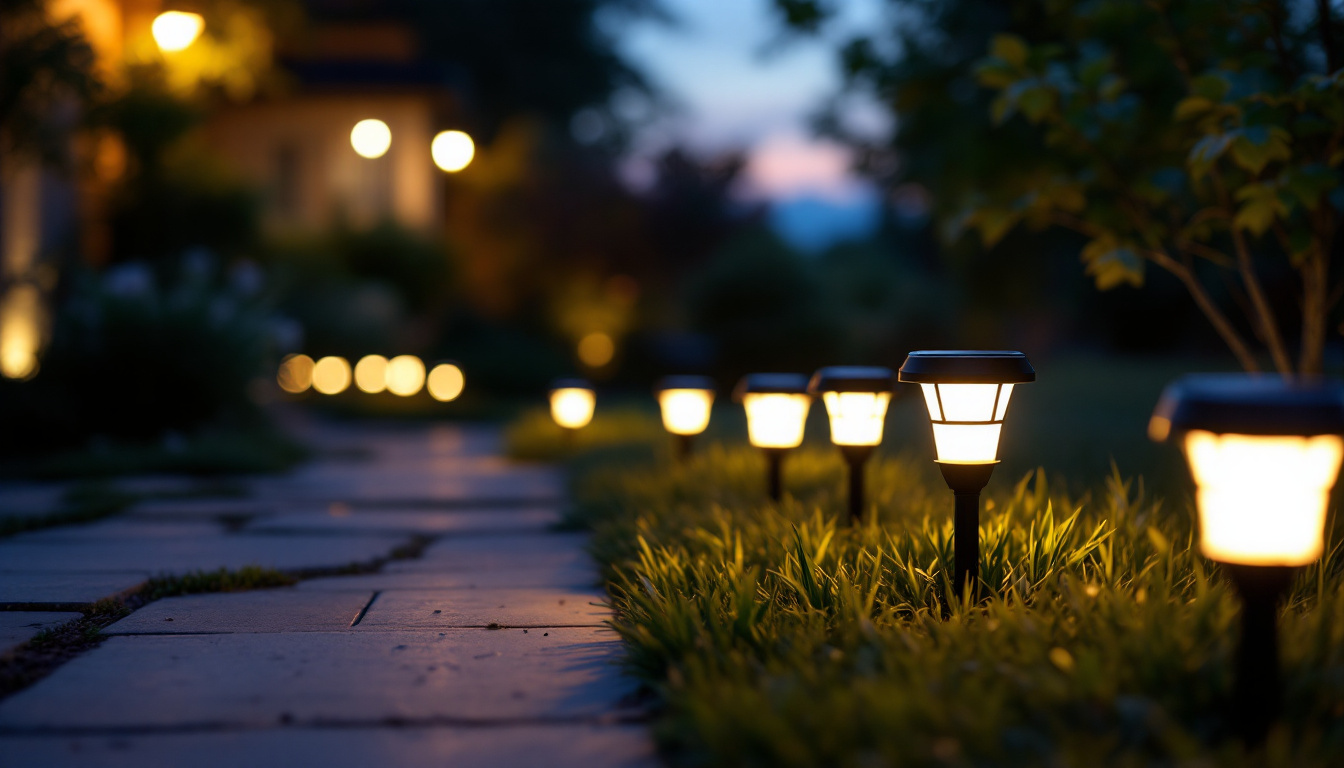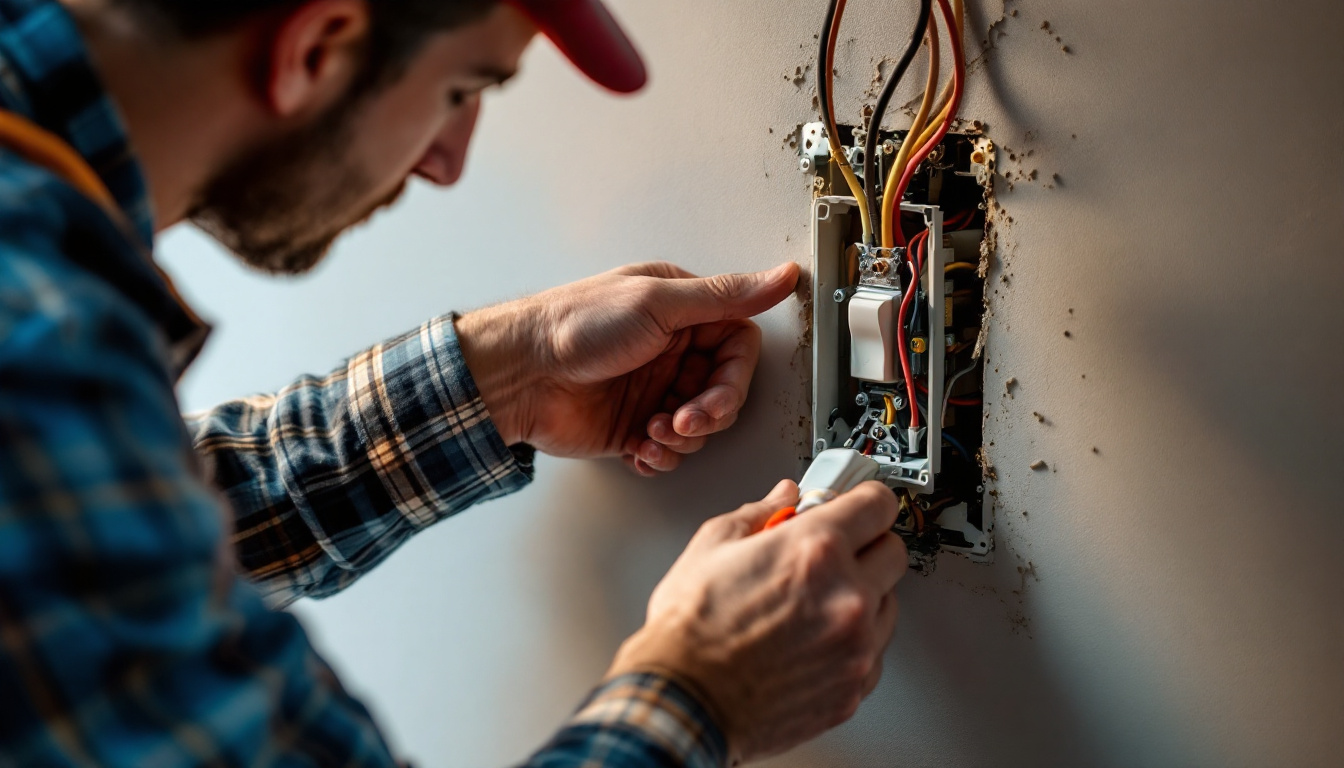

solar LED lights have emerged as a popular and sustainable lighting solution for various applications, from residential gardens to commercial outdoor spaces. These lights harness solar energy, converting it into electricity to power LED bulbs, which are known for their efficiency and longevity. As the demand for energy-efficient solutions increases, understanding the compliance aspects of solar LED lighting becomes crucial for lighting contractors.
This article aims to provide essential insights into compliance requirements, industry standards, and best practices that lighting contractors should be aware of when working with solar LED lighting systems. By adhering to these guidelines, contractors can ensure their installations are not only effective but also meet regulatory standards.
One of the key advantages of solar LED lights is their ability to operate independently of the electrical grid, making them an ideal choice for remote areas or locations where traditional wiring may be impractical or cost-prohibitive. These lights typically come equipped with solar panels, batteries, and intelligent control systems that optimize energy usage based on environmental conditions. Furthermore, advancements in solar technology have led to the development of more efficient photovoltaic cells, enabling solar LED lights to generate more power even in low-light conditions. This innovation not only enhances the reliability of solar lighting but also expands its applicability across diverse settings, from urban parks to rural pathways.
Moreover, the integration of smart technology into solar LED lighting systems has revolutionized the way these installations are managed. Many modern solar LED lights feature motion sensors, timers, and remote control capabilities, allowing users to customize their lighting experience according to specific needs. For instance, motion-activated lights can conserve energy by only illuminating when movement is detected, while programmable timers can ensure that lights operate during peak hours of darkness. As energy efficiency becomes increasingly prioritized, understanding these technological advancements and their implications for compliance will empower contractors to deliver solutions that not only meet but exceed client expectations.
Compliance in the context of solar LED lighting refers to adhering to local, state, and federal regulations that govern the installation and use of these systems. This includes safety standards, environmental regulations, and energy efficiency mandates. Understanding these compliance requirements is vital for lighting contractors to avoid legal issues and ensure the safety of their installations.
Before commencing any solar LED lighting project, it is essential for contractors to familiarize themselves with local regulations. Different municipalities may have specific codes that dictate where and how solar lights can be installed. This could include restrictions on the height of fixtures, light pollution considerations, and aesthetic guidelines that align with community standards.
Obtaining the necessary permits is another critical step. Contractors should be prepared to submit plans and specifications to local authorities, demonstrating how their installations comply with existing regulations. This process may involve inspections and approvals, which can vary significantly from one location to another. Additionally, it is important to engage with community stakeholders early in the project to address any concerns they may have regarding the visual impact or operational aspects of the solar lighting systems. This proactive approach can foster goodwill and facilitate smoother project execution.
In addition to local regulations, contractors must also consider national and international standards that govern solar LED lighting. Organizations such as the Illuminating Engineering Society (IES) and the International Electrotechnical Commission (IEC) provide guidelines that ensure safety, performance, and energy efficiency.
Contractors should be familiar with standards related to photometric performance, which dictate how light is distributed and the intensity of illumination. Compliance with these standards not only enhances the quality of the lighting installation but also ensures that it meets the expectations of clients and end-users. Furthermore, understanding the environmental impact of materials used in solar LED systems is crucial. Many standards emphasize the importance of sustainable sourcing and the recyclability of components, which not only comply with regulations but also appeal to environmentally conscious consumers. By adhering to these standards, contractors can position themselves as leaders in the sustainable lighting industry, attracting clients who prioritize eco-friendly solutions.
One of the primary advantages of solar LED lights is their energy efficiency. However, contractors must ensure that their installations maximize this efficiency. This involves selecting high-quality solar panels, batteries, and LED fixtures that are designed for optimal performance.
The selection of components is critical for achieving energy efficiency. Solar panels should have a high conversion efficiency rate, meaning they can effectively convert sunlight into electricity. Similarly, batteries must be capable of storing sufficient energy to power the lights during periods of low sunlight.
LED fixtures should also be chosen based on their lumen output and energy consumption. Contractors should look for products that are ENERGY STAR certified or have similar endorsements, as these certifications indicate that the products meet stringent energy efficiency criteria. Moreover, it’s essential to consider the color temperature of the LED lights, as this can affect not only the ambiance but also the perceived brightness and energy consumption. Warmer color temperatures can create a more inviting atmosphere, making them ideal for residential areas, while cooler temperatures may be more suitable for commercial applications where visibility is paramount.
Contractors should also consider the environmental impact of their solar LED lighting installations. Using sustainable materials and components can significantly reduce the carbon footprint of a project. Additionally, promoting the use of solar energy contributes to reducing reliance on fossil fuels, aligning with global sustainability goals. The lifecycle of solar products is another important factor; selecting components that are recyclable or made from recycled materials can further enhance the sustainability of the installation.
Educating clients about the environmental benefits of solar LED lights can also enhance the appeal of these installations. By highlighting the long-term savings and positive impact on the environment, contractors can position themselves as leaders in sustainable lighting solutions. Furthermore, sharing case studies or testimonials from previous projects can provide tangible evidence of the benefits, helping to build trust and encourage potential clients to make the switch to solar. Engaging in community outreach or workshops can also foster awareness about the advantages of solar technology, ultimately contributing to a broader acceptance and adoption of sustainable practices in lighting design.
Proper installation of solar LED lights is crucial for ensuring compliance and optimizing performance. Contractors should follow best practices to guarantee that their installations are safe, effective, and long-lasting.
Before installation, a thorough site assessment is essential. This involves evaluating the location for sunlight exposure, potential obstructions, and the specific lighting needs of the area. Understanding the site conditions allows contractors to design an effective lighting plan that maximizes solar energy capture.
During the planning phase, contractors should also consider the layout of the fixtures. Proper spacing and positioning can help achieve uniform illumination while minimizing light pollution. Additionally, planning for future maintenance access is important to ensure that the lights can be easily serviced or replaced as needed.
When installing solar LED lights, contractors should adhere to manufacturer guidelines and best practices. This includes securely mounting fixtures, ensuring proper wiring connections, and positioning solar panels to receive maximum sunlight exposure. Attention to detail during installation can prevent issues down the line and enhance the overall performance of the lighting system.
Moreover, contractors should be aware of the importance of grounding and electrical safety. Following electrical codes and standards is essential to prevent hazards and ensure the safety of the installation.
To maximize the lifespan and performance of solar LED lights, regular maintenance is necessary. Contractors should educate clients about the importance of upkeep and provide guidelines for maintaining their systems.
Routine inspections can help identify potential issues before they become significant problems. Contractors should recommend checking solar panels for dirt or debris that could obstruct sunlight, as well as inspecting batteries for signs of wear or damage. Regularly testing the functionality of the lights ensures that any issues are addressed promptly.
Additionally, keeping an eye on the surrounding environment is important. Over time, vegetation or new construction may obstruct sunlight or create shadows that affect the performance of solar panels. Clients should be encouraged to maintain the area around the lights to ensure optimal performance.
As technology advances, lighting contractors should stay informed about new products and upgrades available in the market. Recommending upgrades to clients can enhance the performance and efficiency of their solar LED lighting systems. This could include replacing older fixtures with newer, more efficient models or upgrading batteries to improve energy storage capacity.
Contractors should also be prepared to replace components as needed. Over time, batteries may degrade, and LED fixtures may lose brightness. Educating clients about the expected lifespan of various components can help them plan for future replacements and ensure their lighting systems remain effective.
Solar LED lights offer a sustainable and energy-efficient lighting solution for various applications. However, lighting contractors must navigate a complex landscape of compliance requirements, industry standards, and best practices to ensure successful installations. By understanding local regulations, selecting high-quality components, and adhering to installation best practices, contractors can deliver effective and compliant solar LED lighting solutions.
Moreover, educating clients about the benefits of solar LED lights and the importance of maintenance can enhance the longevity and performance of these systems. As the demand for sustainable lighting solutions continues to grow, contractors who prioritize compliance and quality will be well-positioned to succeed in this evolving market.
Ready to elevate your lighting projects with solar LED lights that meet all compliance requirements and exceed expectations? Look no further than LumenWholesale for all your lighting needs. Our extensive selection of spec-grade lighting products comes with the assurance of quality and performance, all at unbeatable wholesale prices. Say goodbye to middleman markups and hello to hassle-free bulk buying with free shipping. Don’t compromise on quality or value—choose LumenWholesale for the perfect blend of affordability and convenience. Explore our wholesale lighting options now and light up your projects with confidence.

Discover why purchasing outdoor linear light fixtures in bulk from local distributors might not be the best choice.

Discover the essential insights into Etherium that every lighting contractor should know.

Discover the top challenges lighting contractors face when installing back-to-back electrical boxes for switches and receptacles.

Discover the essential guide for lighting contractors on wall sconces, exploring design trends, installation tips, and energy-efficient solutions to enhance any space..
Get notified when NEW deals are released.
Optimize your budget with wholesale discounts.
Only top-quality, specification-grade lighting products.
No additional costs at checkout - what you see is what you pay.
We understand the unique needs of contractors.